So ever the eye for a bargain, I wondered how low you could go to get a digital SLR ? Over the years I’ve managed to snag some brilliant cameras both analogue and digital for peanut prices ? But how about a game changing Canon for less than the cost of Takeaway for 2.
But is it any good for 2020 ?
Rebel, Rebel ?
The EOS 300D was sold in Japan as the Digital Kiss and in the US as the Digital Rebel. And boy did this shake up a market which until its arrival consisted of dSLR costing thousand of dollars.
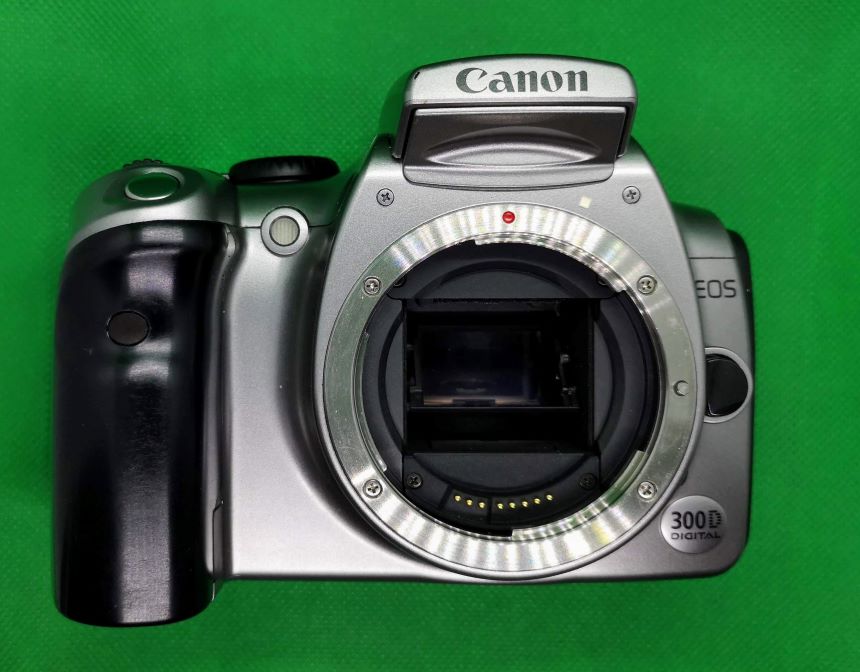
This is the first dSLR to breach the $1,000 USD barrier.
Today when you can buy a dSLR with a Kit lens for just over 300 quid that seems a lot. But back in 2003 even consumer level dSLR had price tags in 4 figures.
At just $899 USD and you could get the body. The lens kit version with a 18-55mm zoom gave you a dollar change from $1000USD.. That kit lens was one of the first EF-S lenses made by Canon with the 300D introducing the lens class
But before we start I’ve a few confessions
Confession 1 – I Shot a Canon, I think I like it
If you already didn’t know already that when it comes to SLR of both analogue and digital type, I’m a Nikon bunny. My First SLR was an ageing then (and still ageing now) Nikkormat EL. In the days before I came back to film my first dSLR was a D50 and this blog is littered with F mount cameras from the 60’s to the 2000’s.
But I’m not a blind devote to Nippon Kōgaku. I have dabbled with K mount and M42. I’m also not in the business of fuelling the Nikon v Canon weirdness that populates a lot of online chat, My Loyalty to Nikon is as much due to my glass and the usually logical (to me) layout. But I’m well aware the differences between these 2 fine makes is actually pretty small nowadays and yes they leapfrogged each other at times but…

So I’m hopeful no bias appears but I will mention the Nikon D50 a tad in comparison. On a non SLR/dSLR side some of my favourite cameras are Canons like the Canonet rangefinder and the bulk of the compact digitals I’ve bought new have been Canon.
And I liked this despite its niggles.
Confession 2 – a Pyrrhic Victory
So I’d secured the camera for just £14.50 plus postage. On a plus it was tested by a reputable eBay camera selling company with no quibble return policy.
But the auction was clearly marked as just the camera. A second hand battery and a cheap charger (that might be a bit naff) worked out more than the cost of the camera. Ironically the camera came with an undeclared battery !!!
Then there is the lens issue. As I said I’m a Nikon Bunny and have a few k-mount lens to hand as well but no Canon Glass. Luckily my father in law has some pretty more upmarket Canon cameras so I was able to borrow one of his lesser lenses. I say lesser advisedly, as I’ve got a EF-S 17-85mm f/4-5.6 IS USM ( with image stabilisation and ultrasonic motor). This is a major step up from the kit 15-55mm that the 300D came with. It also still sells for around £80-100 second hand and working.
That raises an interesting choice. Buy the body and get a better than kit lens or get with kit gear ? The latter can be cheap and even at the time of typing CEX would post you one with Kit lens battery & charger and a warranty for £60. You’ll pay less on the ‘Bay too.
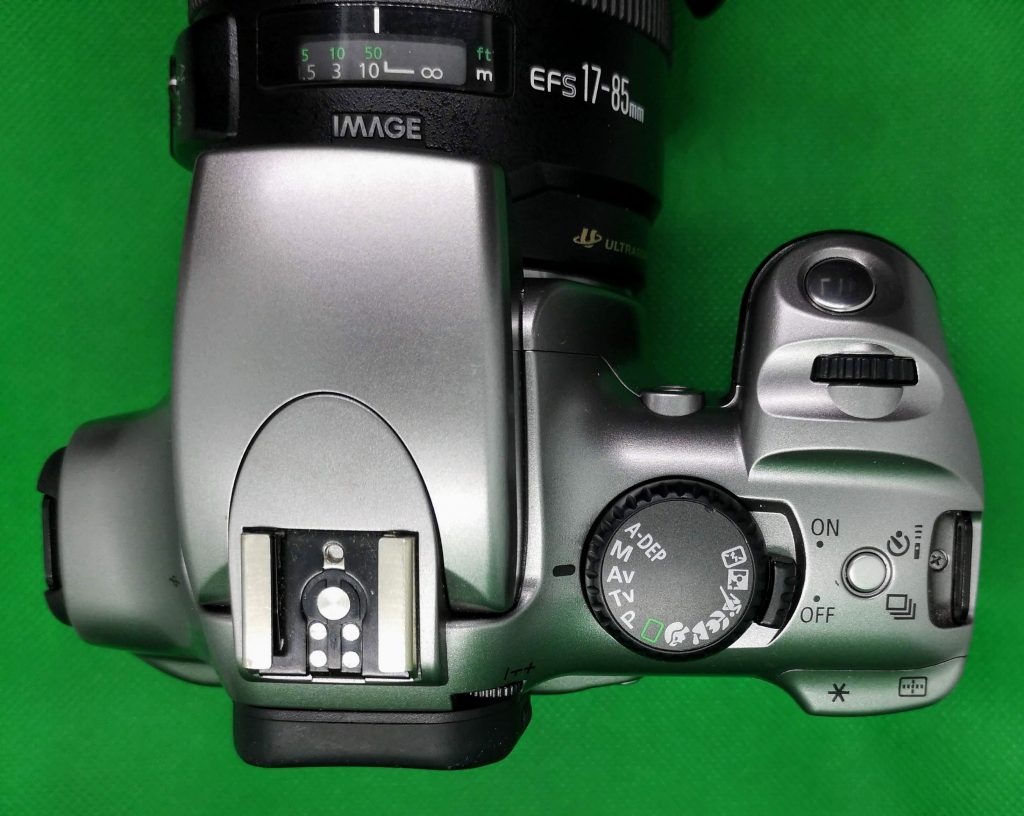
Camera Specs
The brief spec is this a Canon EF mount dSLR with a 6.3 MP sensor.
Many folk basically felt Canon took a prosumer EOS 10D and cost cut it to make the 300D replacing the magnesium alloy body with plastic and the pentaprism with a pentamirror for starters. Personally I think that’s somewhat simplistic as the top and rear layout are quite different especially in the Mode dial & LCD positioning. What is certainly the case is that both cameras share a similar sensor and processor. The firmware of the 300D appears to have been a crippled version of the 10D as you can actually unlock 10D features with Hacked firmware version (links on the Camera-wiki page for this)
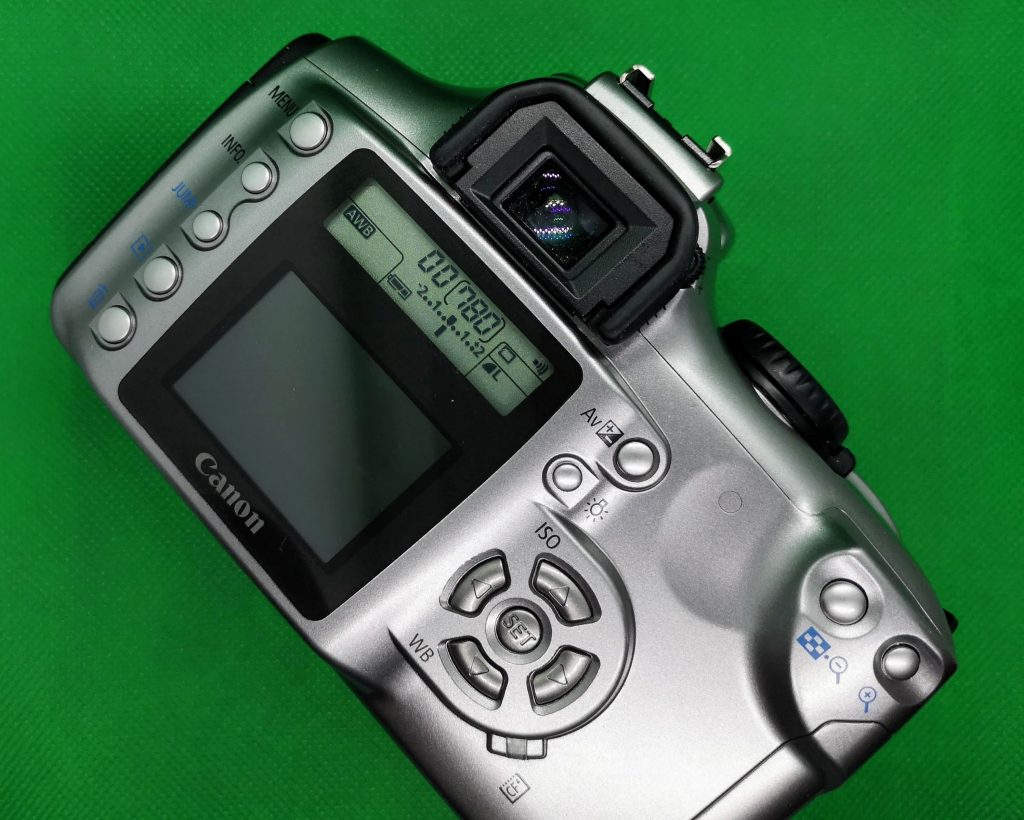
(1) Sensor, Shutter and Metering
The APS-C sized CMOS sensor has an effective 6.30 megapixels (3088×2056) resolution. Shutter is electronically controlled with speed of 30sec to 1/4000 in 1/3 stop increments. Bulb mode is possible and flash syncs at up to 1/200. This is matched with a first gen DIGIC processor that we’ve seen already on the Power Shot A80.
Shooting RAW you only get 4 shots before the buffer locks you out. In fact shooting any jpeg mode as well you just get 4 shots before the camera lock in busy mode. This not the camera you are looking for if you are wanting sports or action photography. At least the camera displays your available shot count in the viewfinder.
Metering is naturally TTL and offers a 35 zone matrix style evaluative mode. Using the Exposure lock button in some modes allow you to switch to a central 5 zone “partial mode” (in the shape of a +) covering the central 9%. In manual mode only you get centre-weighted metering. EV range from the manual is 1-20 (with 50mm f/1.4 at 100 ISO). The camera operates with 100-1600 ISO range in full stops.
But you have no option to engage centre weight nor spot metering in other modes.
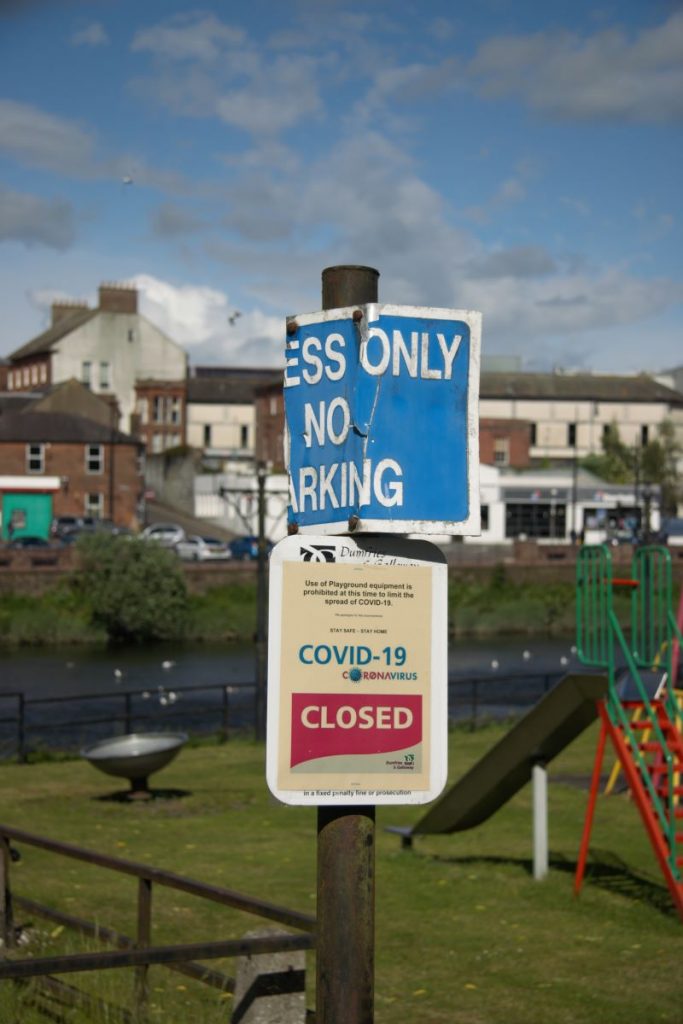
(2) Autofocus & Flash
The AF system offers 7 focal points (2 more than the later D50) and you can select between 7 auto points to each individual point but not on shot. Canon Lenses have a switch that allows you to move to Manual focus and the camera’s AF rangefinder will offer focus assist if needed.
In terms of flash there is built in TTL controlled pop up flash with a GN 13 (100ISO, metres). It offers red-eye reduction and slow sync in some modes. It supports Canon speedlite external units although older units may not benefit from TTL metering.

(3) Firmware
Mines has the default software. You change most settings on the colour LCD on rear. But this offers relatively limited choices. The Nikon D50 offers loads more control but that is 2 years in the future.
You have the ability to switch image size and quality mode. you have a choice of RAW and large (full), medium & small resolution jpeg images. The JPEG have a fine and normal quality setting. You use the menu to set auto bracketing (not the most user friendly if you ask me).
Using a dedicated button, White balance can be set on the upper B&W LCD. You have to option to set up personalised WB options which is handy. The camera also offers WB auto bracketing which will take shots warmer and cooler alongside the default.
You can set image parameters (sharpness, tone, contrast and colour) but these are accessible via the menu. Irritatingly you can’t set up setting to a user defined option on the command dial.

There is a sensor cleaning option but don’t get excited this just allows you to lock up the mirror and open the shutter to get at the sensor for cleaning. There is heavy support for Direct Printing to both some Canon printers and DPOF.
(4) Power, Storage & Display
Battery is by a dedicated rechargeable Lithium pack. When new Canon rated a life of around 600 shots without flash (400 with 50% flash use) at 20C. You can buy a 2 battery compartment upgrade power pack. There is a CR2016 coin battery for storing setting like time and date. This is located in the main battery compartment.
The camera accepts Compact Flash (CF) type 1 & II cards. CF type 1 cards are widely available and I tested the camer with a secondhand SanDisk Ultra 4gb one. Although you can get massive CF cards, 8Gb seems to the maximum this card can format to. Bigger cards just get formatted up to 8Gb usable. if you are wedded to SDHC cards you can buy SD to CF adaptors for a few quid.

There are 2 LCD on the rear. there is a small B&W display that most DSLR (including the 10D and the D50) put on their top plate showin some setting info and immediately below a 1.8″ 118K colour display for image playback or menu option.
Unsurprisingly given this a 2003 dSLR there is no live view or video recording (the 2004 professional Fujifilm FinePix S3 Pro and the 2008 prosumer Nikon D90 introduced these respectively)
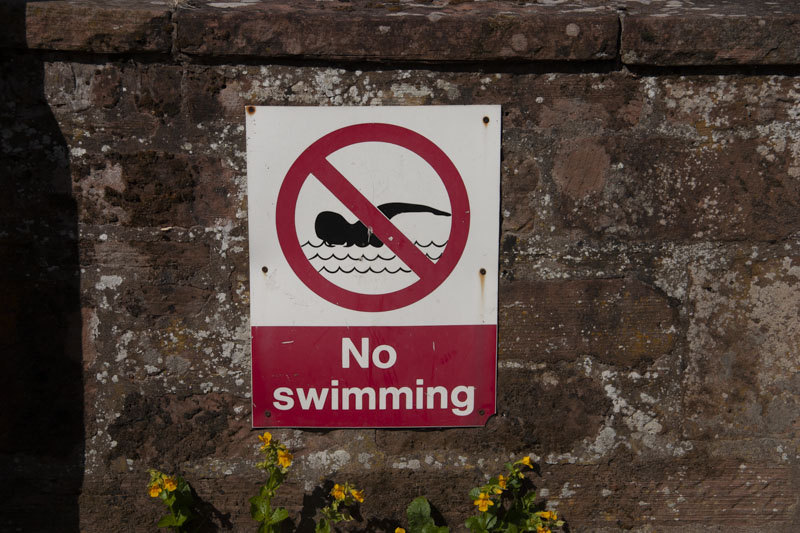
(5) Viewfinder
Good sized, bright, diopter variable (-3 to +1.0) viewfinder. Beneath the focus screen is an info LCD that displays what you need (shutter, aperture, EV comp/bracketing, flash and a few other relevant things). This is clear and easy to follow.
The focus screen is simple bar the 7 LED that match focal points. They don’t look as polished as later DSLR bu they do the job. I also found I got better results switching to a single central focal point but that may just have been me.
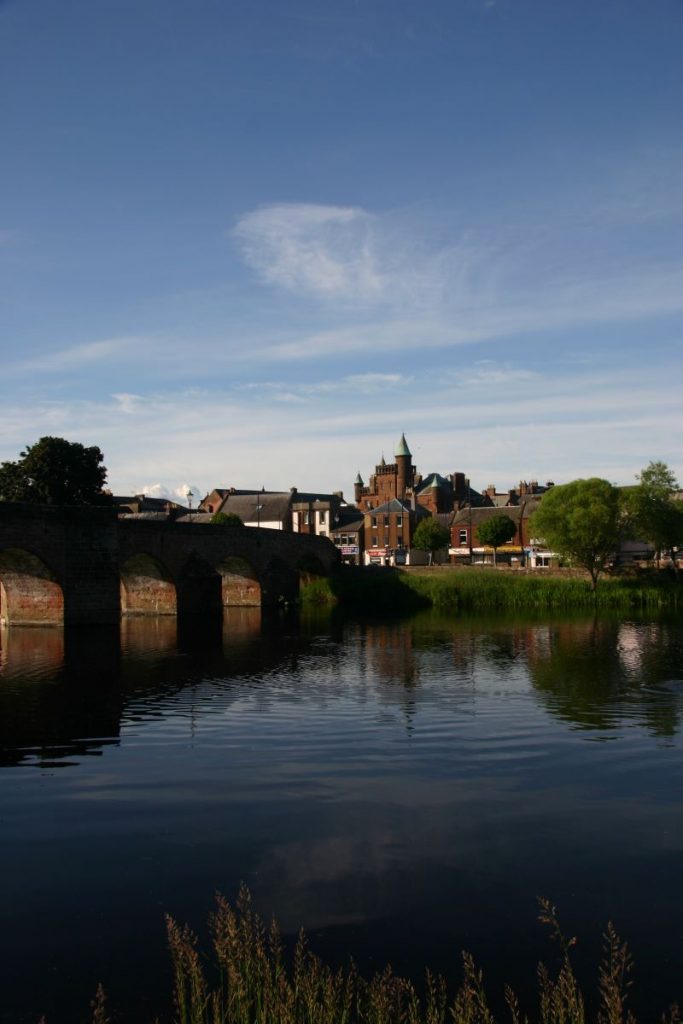
(6) Lens Support
Good news this will work with most EF and EF-S lenses.
The EF system has been around since 1987 and means you have a massive amount of Glass to pick from. This was the first Camera to use EF-S lens for cropped sensors. If you’r thinking of going down the EOS route it is worth noting that whilst EF-S ready bodies like the 300D happily accept EF lenses the reverse is not true.
Not that you’d really want to use a cropped sensor lens on a full frame camera. However this lack of compatibility also applies to older APS-C & APS-H dSLR which can only use EF glass.
Outside Japan the camera was launched with a cheap Kit EF-S 18-55mm zoom. This lacked features like Ultrasonic motors (USM) and canon’s Image Stabilisation sytem (IS). The Japanese version was had a USM lens as did later black models sold in Europe

(7) Accessories & Bundled software
The Camera had quite a it of accessories available for it at launch. There’s the battery pack, remotes (both wired and IR), Angled finders and even diopter adjusts (-4 to +3) for viewfinder (if the inbuilt wasn’t good enough).
The camera was bundled with Canon software specific for the RAW files and a lite version of Adobe Photoshop. That said my current Photoshop and lightroom has no issues reading the files. I also used the freeware Irfanview without problems.
Mode Dial -Av To Tv ?

The Mode dial what you’d expect but with some labelling twists. This is what you’d expect a Auto PSAM & mode setting except the labels don’t quite match. While everyone else uses A(uto) PSAM, Canon to this day don’t. Even their current range from the beginner 2000D to the pro 5D mark IV don’t use S & A for shutter and aperture priority – they use Tv and Av. This is pretty much only used by Canon and Pentax cameras.
Later Canons do use A (or more correctly A+) for Auto but here you’ve a green box. Twist the dial one way and you’ve got P (programe, Tv , Av, M (manual) and A-Dep. This is short for Automatic Depth of Field which optimises your DoF funnily enough so that near and background are in focus. These 5 modes Canon calls creative zones.
Turn the other way and you’re in what is known as the image zones although these along with Auto are also described as basic zones. you get a preset for portrait, landscape, close-up. Sports, Night portrait and no flash. It’s worth noting the dial cannot turn a full 360°.
Build
This is well made stuff especially as we’ll see when we get to shutter count. Mines looked pretty fresh for 17 year old plastic camera. The only cosmetic issue was the rubberised coating on the grip had gone to black tar. This is common on many Canon and Nikon products from this era. Some supermarket own brand cleaning wipes dealt with this easily enough.
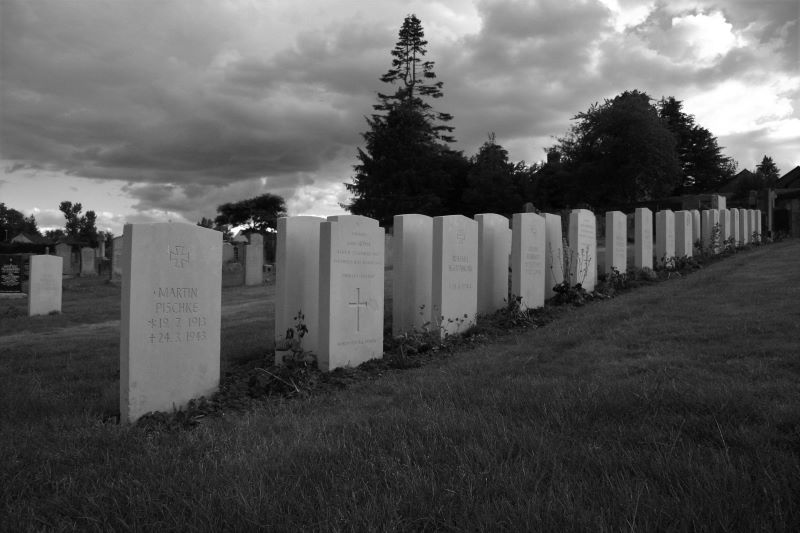
Sadly as was the fashion most in the West are Silver-bodied. All black version were sold in Japan (where clearly buyers had better taste) and only later in other markets.
It superficially looks like any other dSLR but there are a few differences. The mode dial sits to the right of the viewfinder hood rather than the left. That’s because there is no top plate LCD here. I found this quite nice as it reminded me of the positioning of the shutter dial on pre AF film SLRs.
As I’ve mentioned on the Rear you get 2 LCD panels. the top panel which really should on the top plate is small but provides the usual shooting info like shutter, aperture, WB mode, drive mode and EV comp & bracketing. Beneath is the review 1.8″ LCD which also allows for menu choices.
The major longevity issue with any SLR or DSLR is shutter life. This model had an estimated shutter life expectancy of 50,000. Canon have never been the best at making actuation numbers available. ou can with some 3rd part software view your shutter count and mines sits at more than 42,000. That’s pretty heavy use (my D50 has less than 24,000 and has only had 2 years less use). Still Oleg Kikin’s website suggest many survive beyond at 50K limit.
Useability
It is big camera by entry level standards today but only a little bigger than the D50. It is still more compact and lighter (weights at 560gms) than my prosumer 2010 Nikon D7000 and the current D7500. The camera is a bit of centre weight-wise, but not worse than rivals.

Canon use a vertical command dial behind the shutter button which is a feature of the EOS series for decades and still is in use today. I prefer using my thumb on a rear plate but that’s because I’ve grown up in Nikon land. This is okay but different. There a grove on rear which worked for my thumb on rear but a few launch era reviews complained about hitting the AEL and AF selector buttons above.
The camera takes a couple of seconds to boot up from being switched on and when woken from sleep mode. This is a bloody pain and meant I lost a few shots. My D50 is pretty much straight back on. This makes the 300D feel more like an aging compact than dSLR.
The lower rear LCD playback/menu screen is hard to see in daylight. Picture review I can live without but it is a pain for the menu especially if you need to set up bracketing. The small font size and menu colours don’t help. The D50 can be hard to review in daylight but is easy to use the menus as ext much bigger and colouring makes it easier to read. The upper B&W menu has no such issues but other than fiddling with focus setting or ISO most info can be seen in viewfinder

Results
I’m not gonna discuss optical qualities here. This isn’t about the glass and the mid range zoom I borrowed was far from perfect but much better than the kit lens the camera came with.
From an exposure point of view this worked well. It stumbled occasionally in complex lighting such as shooting into shade under trees with a bright sky but broadly it did well enough. I think I get better shots off my D50 but that due to the fact I’ve used it for over a decade and half and have shot around 25,000 frames on it. So the Canon is doing what I would expect here. It is just a shame I couldn’t engage spot or centre weight metering by default.
A 6MP sesnor doesn’t sound a lot by modern standards but will if good enough to give prints of almost 10×8″ at the exacting 300dpi (you can probably get away with a slightly bigger image). For web use the 300D images could fit on a 51″ monitor at the 72DPI standard
And this is a good sensor for it’s time. This shot of the Camera Obscura round the corner from me brought it home
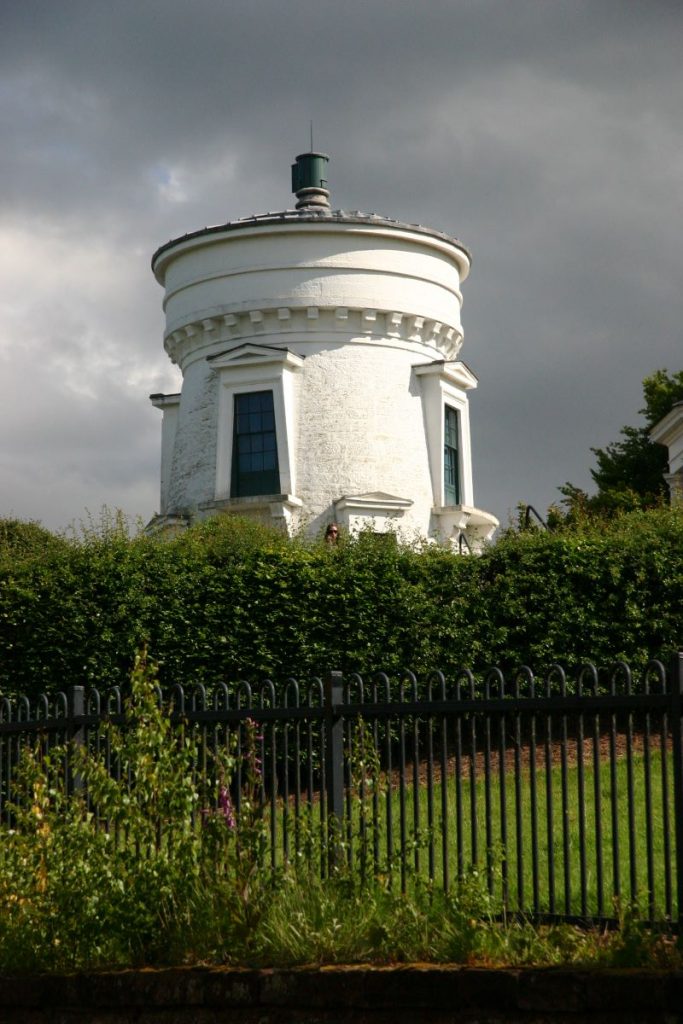
At the time I didn’t realise I was being watched. This is a pixel to pixel 400×400 crop.

This is good stuff for 800 ISO. For that ISO & 2003 it is not over processed although there is some clear fringing if you zoom even closer. That’s more suggestive of processing than optics but it isn’t bad.
My more traditional test shot at 100 ISO.

Zooming in from the 6.3MP jpeg to a smaller 730×539 pixel crop shows pretty good detail.
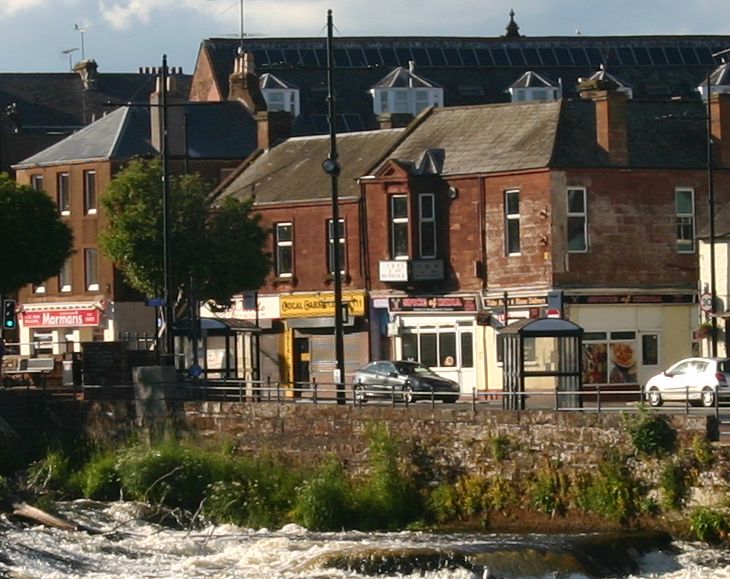
Both cropped images show some artefacts which I can’t put down to the lens. i’d say things are a little bit over-sharpened but this isn’t bad at all.
There is a somewhat limited dynamic range compared to a 2010’s dSLR. But this is a 2003 camera and way much better than compacts of the period.

The Image quality does worsen as you ramp up the ISO. Take these very low light handheld shots of some Scotch

The 1600 ISO looks okay but zoom in and the degradation is obvious. Still it isn’t bad for 2003.

Move down to 400 ISO Image is softer on close up. But that’s due to massive 1/2 second exposure time. Image stabilisation was already doing overtime on the 1600 ISO shot. Canon deserve credit that even when the shutter dropped to half a second handheld I can still take an okay looking shot

But the reduced noise of 2 stop lower ISO is evident on close up despite this.

Given these are handheld I give credit to the 300D and the lens in very low light this is highly impressive. Although a 1600 ISO limit is minuscule by todays’s standards.
AWB is okay but at times struggles indoors where my Nikon didn’t. Focus is reasonably good but every so often it misses what you want. As I said I got better results from the AF switching to single central focal point rather than relying on auto focus point selection.
PRO & CONS
What’s good
- Working dSLR for Takeaway prices
- Sensor actually good for what it is
- Massive lens range for support
- Good Viewfinder
- DoF preview
What’s Not so Good
- 4 Shot limit
- Slow Boot up/awake
- Metering offers little choice
- Crippled Firmware
- 1600 ISO upper limit
- Menu LCD unreadable in bright daylight
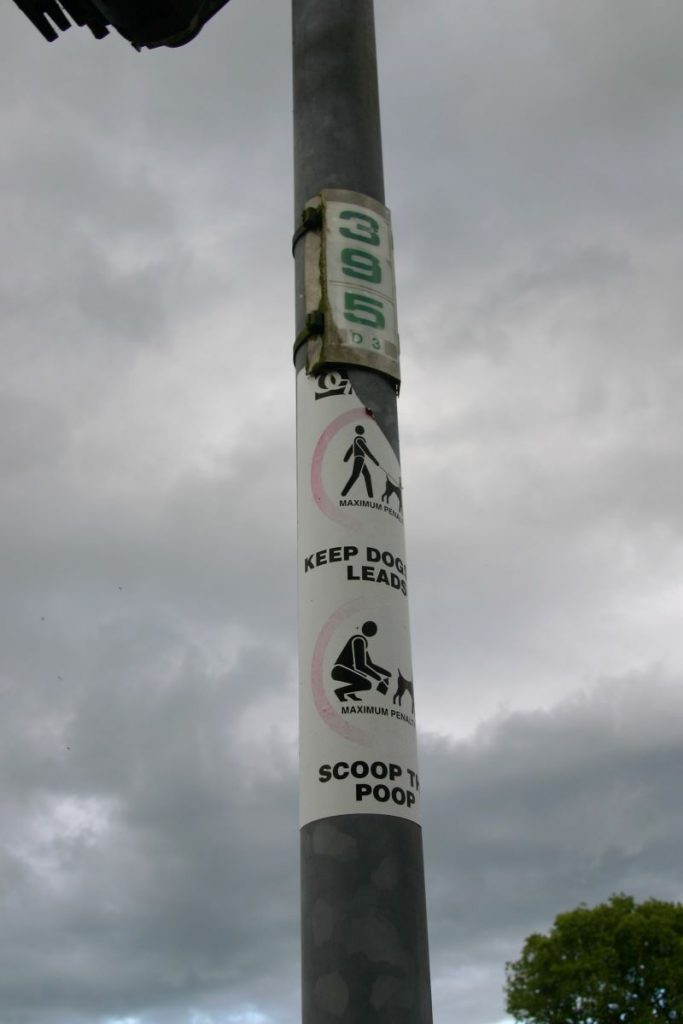
Cost & Some Rivals
I got lucky . But this is do-able at the cost as there are loads of these on sale. For some actual figures at the time of typing the last 5 sold on ebay.co.uk without a lens but working averaged at £37.99 before postage. These differed from black bodied in box with batteries to ‘works’ no caps and no battery,
Buying with a single lens is almost as cheap with a last five average of £48.11 plus postage. Some of those were in the 20’s and described as working. An untested camera and lens sold for just £20.
Conclusions
This camera was a bargain when launched and in 2020 costing less than £15 it is still an incredible bargain for a dSLR.
And it still feels a quality ride 15 years later. I ended up shooting it more than I though I would and as I type a couple of lenses are heading my way from the ‘Bay and a film EOS body. It just works and delivers good results and works with an excellent range of lenses in a ECO system that allows you to shoot both film and digital.
But…
I suspect the niggles will get to you. It won’t be the firmware limitations like the limited flash or the inability to alter metering modes. Nor will the the fact you’re living on borrowed time with the shutter at this price. Nor the occasion oopsies from the metering or AF. Even the bloody slow wake back up time is annoying but not a critical flaw.
The real one that will start to niggle is the shot buffer. All dSLR cameras have them but 4 shots is just awful making this useless for any action/sports work and a pain for most things
And cameras that fix these issues are not that much more such as the Canon EOS 400D or the Nikon D50 & D70.
Other sources
DPreview looked at this back in 2003 and was impressed. Camera decision generates metric scores for cameras based on features, shooting suitability and DxO scores. A score of 43 stacks up well against rivals (the same as the D50 and D70 although if I’m being picky it doesn’t look at frame buffer)

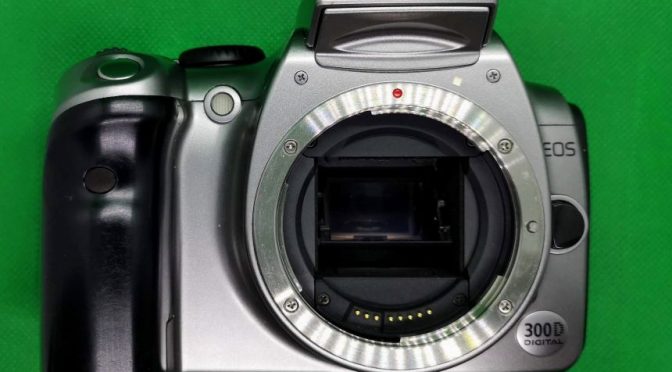
2 thoughts on “A Proper dSLR For 15 Quid ? – the Canon EOS 300D revisited in 2020”